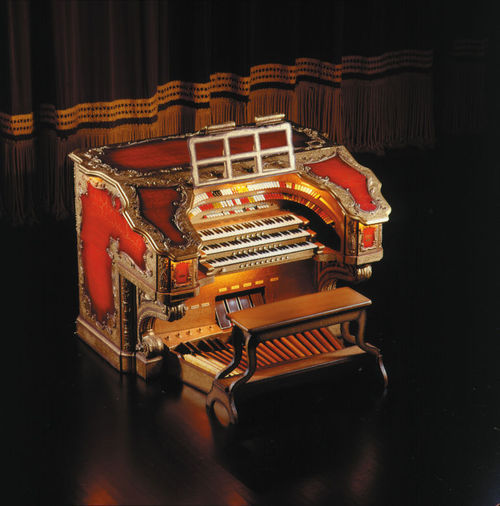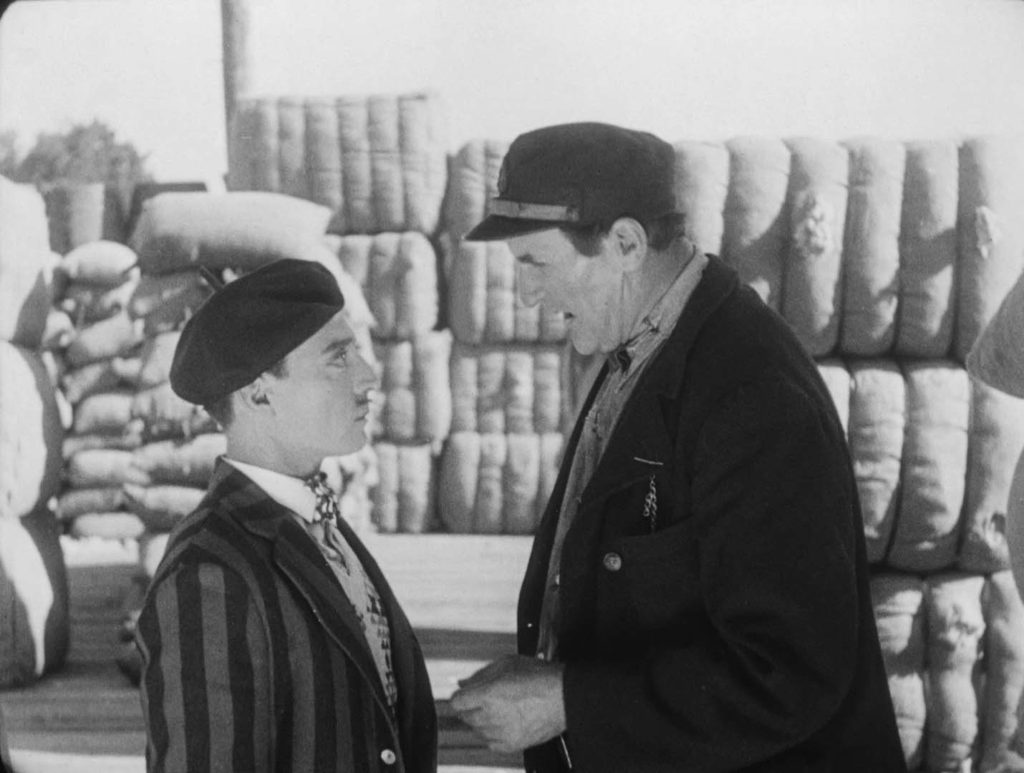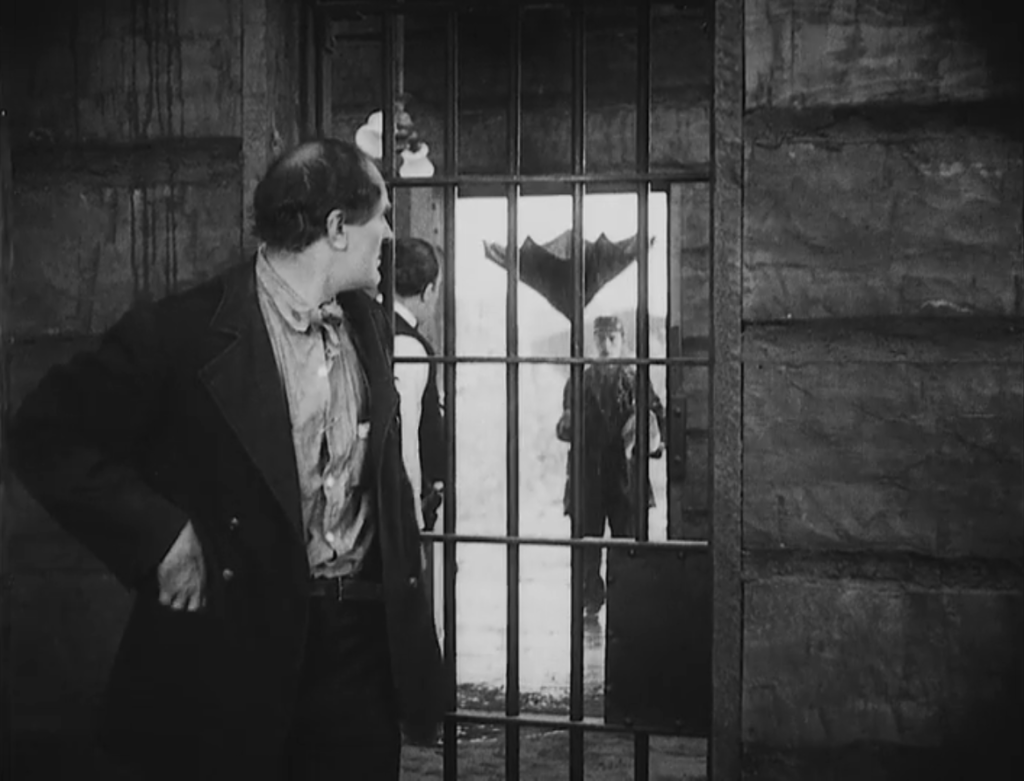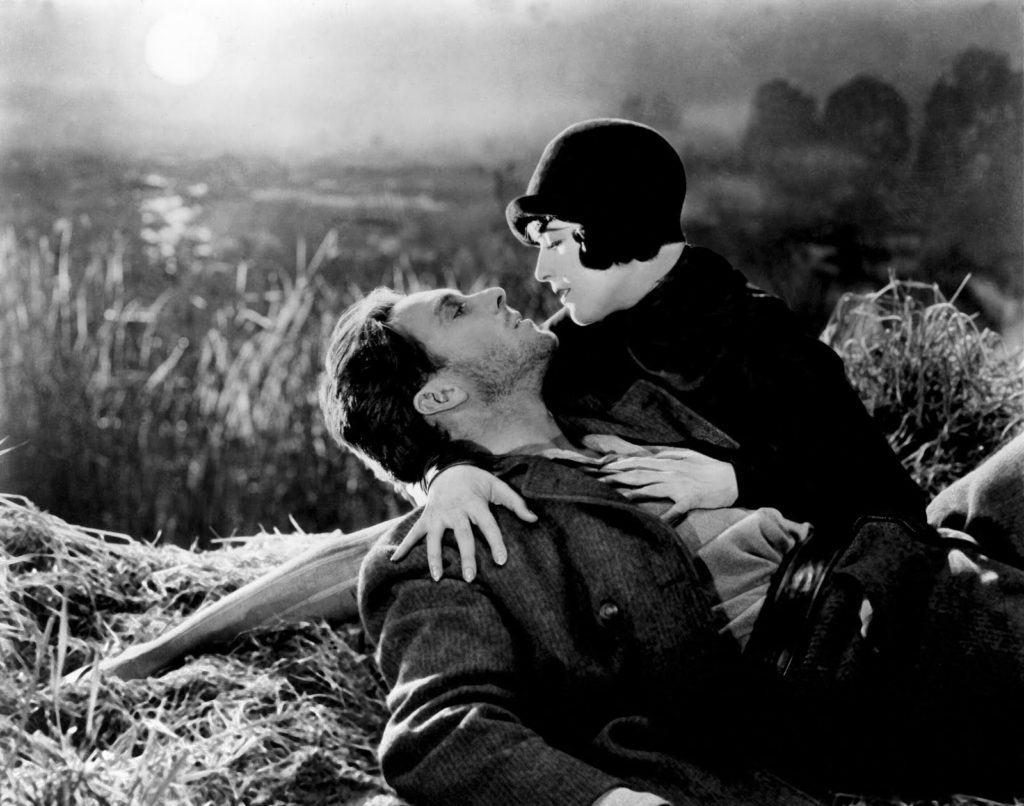The Raucous Sound Of Silence In The Perfumed Twilight Of An Electric Pleasure Dome
Duck Soup Cinema, from the Overture Center’s historic Capitol Theatre in downtown Madison, WI, is a silent film series that in 2016/17 is celebrating 30 years of introducing silent movies to local film audiences of all ages. The following is a write-up of the final showing from Duck Soup’s 30th anniversary series:
The Overture Center for the Arts, in the heart of downtown Madison, WI, capped their 2016/17 “Duck Soup Cinema” series with a 30th Anniversary showing of Buster Keaton’s slapstick masterpiece Steamboat Bill, Jr. Hosted by MC Joe Thompson, and including lobby performers, vaudeville acts, and door prizes, the Overture Center’s historic Capitol Theatre once again revived the spirit of moviegoing in the waning days of the silent movie era with a film that is exactly contemporary with the venue’s 1928 grand opening.

Along with the film and the theater itself, also 89-years-old this movie season is the Capitol’s mammoth Grand Barton Organ. Recently restored to its exact installation specifications (thanks to generous community contributions), the Grand Barton remains the sole fixture of the grand old theater. Perched to the right of the raised stage, and above the audience, the red and gold-trimmed organ console boasts three gleaming manuals, 141 separate sound-stop keys, a special sound-effects “toy counter” – offering scores of percussive effects ranging from a chirping bird to an auto horn – and finally, hidden from view on either side of the stage, 1,034 chamber pipes rising from the floorboards to the ceiling.

On this masterful instrument, organist Jelani Eddington’s equally masterful film-length accompaniment – drawing on period music, traditional tunes, and silent movie “leads” – musically underscored the on-screen antics of the greatest physical comedian to grace the silver screen, Buster Keaton, with the full force of a one-man symphony orchestra. As another organist who has frequently played the Grand Barton, Clark Wilson, puts it: “You don’t so much play an instrument when you play a Grand Barton: you play a theater.” The best way to play a Buster Keaton movie, it would seem, would be in a theater and on a Grand Barton.
…

A silent film buff’s delight, as well as a casual film fan’s, audiences literally of all ages – parents and their small children right alongside groups of elderly and retired people – reveled this past Saturday to the combined 89-year-old pleasures of the theater, its organ, and the great Buster Keaton in his second-to-last silent feature, Steamboat Bill, Jr. Recently reviewed on this site for a release on Blu-ray disc, a 35mm print of the film, projected on a big screen, offered an even higher level of appreciation for a seasoned silent movie fan who had only previously seen this particular favorite on home video.
Part of my enjoyment was watching the film through the eyes of my 7-year-old nephew, who was seeing the film for the first time, and as I was explaining and commenting on the film to him (his reading level is not yet quite up to the speed of reading silent movie intertitles), I too felt like a 7-year-old seeing the screen-immortal Buster for the very first time. A marvel of physical motion and emotional complexity, with enough expressiveness in a twisting pratfall or behind those deep-hooded eyes for a dozen-like screen performers, his larger-than-life dimensions across the Capitol Theatre screen, with the live Grand Barton organ musically marking every sudden move and arresting closeup, is an experience, again, that should not be denied either the the silent film buff OR the casual film fan.

While my nephew’s favorite moment was when Buster rescues his dad – a marvelously blustering Ernest Torrence as Steamboat Bill, Sr. – from jail by unexpectedly punching a cop in the gut (when the cop had been comically built-up to expect a clean sock to the jaw), what I was noticing this big screen view-round was how admirably economical Keaton’s storytelling prowess had become at this point in his late period silent moviemaking career. At a lean 71 minutes, the stunts, thrills, and physical risks that were Buster’s stock-and-trade – this time featuring some of his most famous comic set-pieces, including an on-screen hurricane that climaxes with every part of a two-story house falling on top of him except for a conveniently open window – advance the storyline from his character’s own accident-prone clumsiness early in the film to the increasing physical confidence he displays in commandeering the titular steamboat through the storm at the end.


Leaping up and down the levels of the storm-tossed vessel, hurling himself through the ship’s rigging like a wind-spun piston, Buster at film’s end physically shows himself to be not only worthy of his dad’s macho regard, and his girl’s (Marion Byron) doubting love, but also the ship he had tripped, blundered, and frequently fallen overboard on when first he (uncertainly) alighted land-lubbard’s legs aboard it. My major insight during this Saturday matinee Duck Soup Cinema viewing, then, was that the initially effete William Canfield, Jr. – beret-clad, pencil mustache-wearing, and ukulele-playing – had finally become, in storytelling as well as purely cinematic terms, worthy of the name Steamboat Bill, Jr.
…
With Duck Soup Cinema averaging five silent movie showings per season – three in the fall and two in the spring – Steamboat Bill, Jr. completes a varied program that this year has previously seen Harold Lloyd in his last silent film, Speedy (1928), Fritz Lang’s pioneering science fiction epic Metropolis, and, most recently, Douglas Fairbanks in the fantasy spectacle Thief of Baghdad (1924). (A very special showing last October of flapper commedienne Colleen Moore in the urban social comedy Her Wild Oat [’27] was in fact the first movie ever to be shown at the Capitol when, again, the theater opened in 1928.)

Colleen Moore in HER WILD OAT, the first film to be shown at Madison’s Capitol Theatre in 1928; part of this year’s Duck Soup Cinema series
Next year’s program will continue to balance traditionally popular silent favorites like Harold Lloyd and Buster Keaton, the former in his most famous screen comedy The Freshman (1925) and the latter in HIS most famous screen comedy Sherlock, Jr. (1924), along with the more adventurous screen fare of the independent African-American film The Flying Ace (1926), prominently featured in this year’s Pioneers of African-American Cinema Blu-ray release, and a rarefied cinematic treat in the more obscure Sinclair Lewis adaptation Mantrap (1926), starring Clara Bow. Crowning the 2017/18 Duck Soup series will be an extremely rare public showing of F.W. Murnau’s silent masterpiece Sunrise (1927), which frequently tops lists as one of the greatest films ever made.

F.W. Murnau’s SUNRISE; part of next year’s Duck Soup Cinema series
For the past 30 years, then, Duck Soup Cinema has offered an invaluable opportunity for Madison-area audiences to experience silent movies as they were meant to be both seen AND heard. Audience participation and live performance were key aspects of moviegoing when ornate “movie palaces” such as the Capitol Theatre adorned “capital cities” throughout the country, and Duck Soup’s commitment to low ticket cost and a fun, family-friendly atmosphere has managed to attract packed houses and sold-out shows for the better part of three decades. One hopes the series will continue to provide silent thrills and raucous laughter to a diverse moviewatching community, courtesy of the venue and its magnificent instrument, for another three decades.


